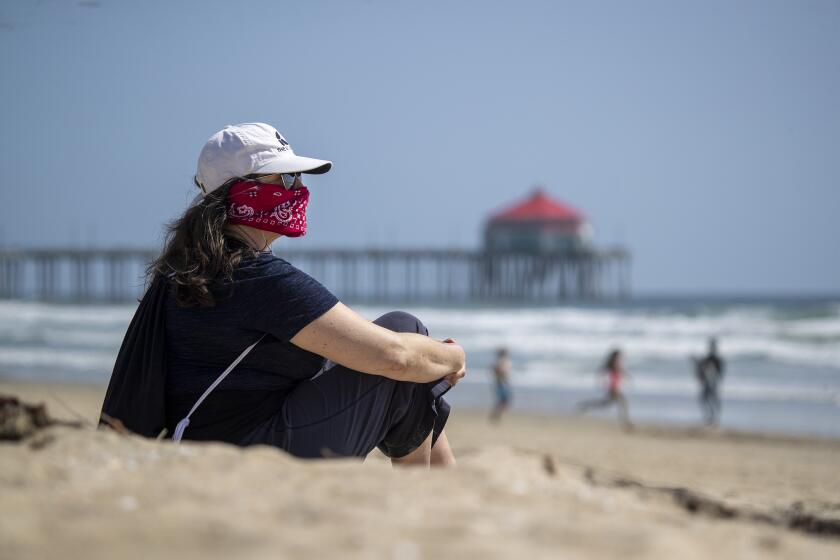In The Pipeline: Park was once a ranch house
After last week’s column on the historic site where the Western Trails Museum used to sit, I thought I’d follow up with one more piece of the past.
The day Maria Hall-Brown and I visited the old site to tape a segment of PBS SoCal’s “Forgotten OC” series, which we co-host, I also wanted to visit another important, hidden Huntington Beach landmark.
It’s right by where Main Street crosses Yorktown Avenue, just across from City Hall. You pull in where Sunrise Senior Living is and park there on the side street. Just in front of a cottage that’s part of Sunset is a plaque. The first line on it reads, “Uphill from this marker once stood the Northam Ranch House, a pivotal landmark in the history of Huntington Beach.”
Between 1894 and 1897, Col. Robert J. Northam, manager of the Stearns Ranchos Co., bought seven parcels from the company and built his mansion on this site. He actually had a mule team move at least one home to the property, then “Diamond Bob” (as Northam became known for his expensive tastes) added to it over the years.
Throughout the century, the Northam Ranch House served as a ranch headquarters, a private residence for company managers and became a symbol of the Huntington Beach Co.
But tragically, on the evening of March 22, 2000, the Northam Ranch House was destroyed in a fire. It had been abandoned for a long time and had become a local hangout. Arson or plain carelessness were considered probable causes.
Soon after, developers, city officials and a local architecture firm salvaged whatever historically significant artifacts they could from the rubble. Then, a historic marker was constructed using brick from the house. And that’s what visitors find today after following the path up a slight hill from where the plaque is near the parking lot.
But it’s also a small, beautiful park, set up high enough to have a steady breeze amid a calm, quiet environment. In 1981, local author Carolyn F. Baily wrote a nice, descriptive passage about what life was like on the hill when Northam was there:
“From there the view was grand. The mesa’s verdant barley and alfalfa fields, interlaced with a chain of sparkling fresh water ponds, spread all the way to colorful Shell Beach. Seed barley from the mesa was sold to farmers who had purchased, drained and cultivated the rich alluvium of the swamps.
“Farmers fed the grain to their cattle, and one by one, many farmers began growing celery, an excellent money crop. Of interest was the colonel’s use of a flag system to signal prospective feed buyers. When the flag was raised he was ready to transact business; when lowered, it signaled, ‘No business at this time.’”
The marker that’s in place up on the hill has photos of the area, before and after the fire, and the mansion looked very impressive. Some of the trees that ringed the property still stand, so it’s possible to get a sense of just where everything originally sat.
Jacquie McCord, executive director at Sunrise of Huntington Beach, is in the process of brainstorming ideas about how to create awareness of the park and potentially, how it might be used for various events. As that develops, I will make sure to cover it here in the column.
In the meantime, though, if you’re ever in the area, this is a nice chance to stand in a very historic place — a former ranch house that, as the plaque states, was a “pivotal landmark” in our community.
CHRIS EPTING is the author of 18 books, including the new “Hello, It’s Me: Dispatches from a Pop Culture Junkie.” You can write him at chris@chrisepting.com.
All the latest on Orange County from Orange County.
Get our free TimesOC newsletter.
You may occasionally receive promotional content from the Daily Pilot.



